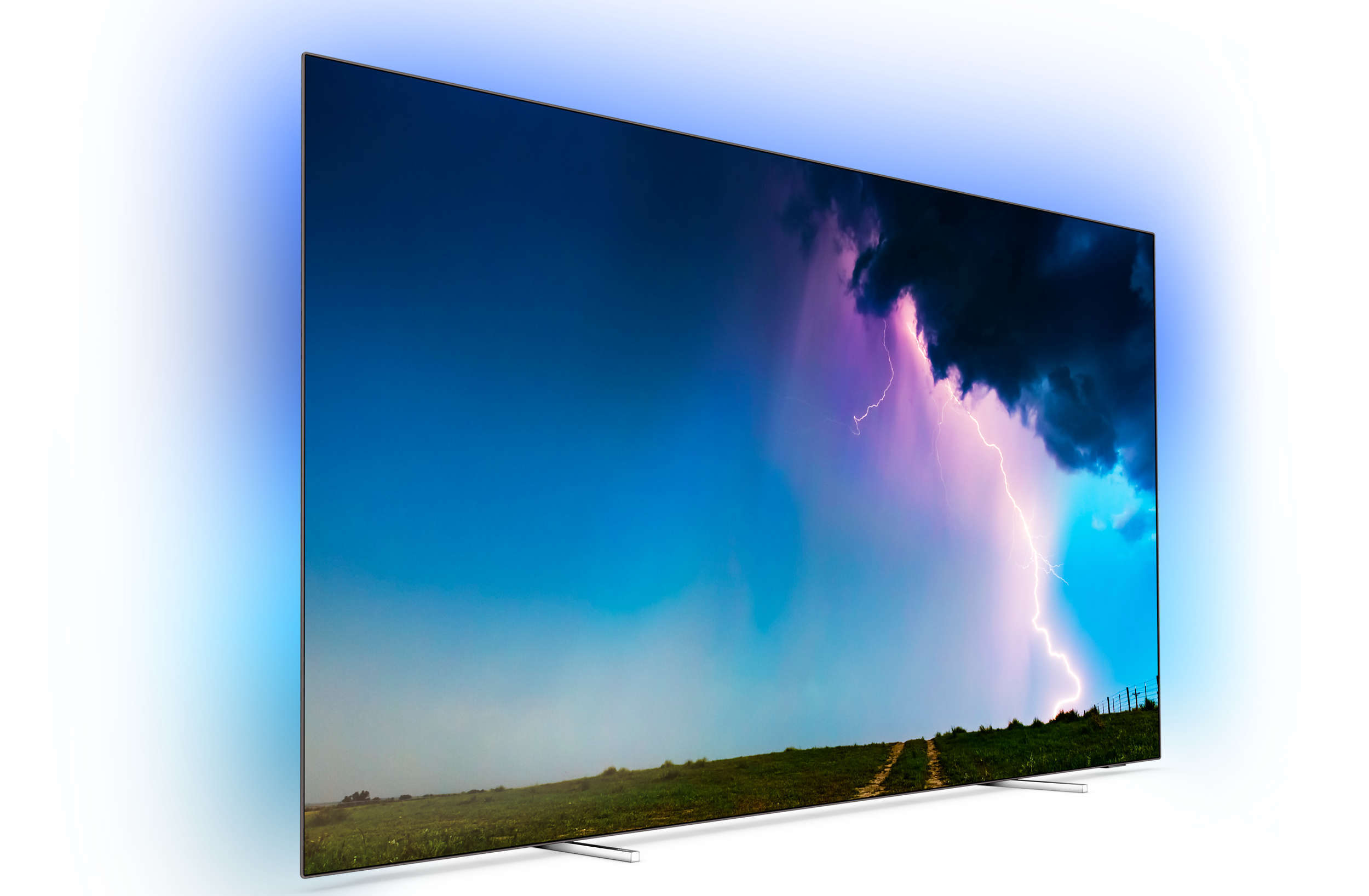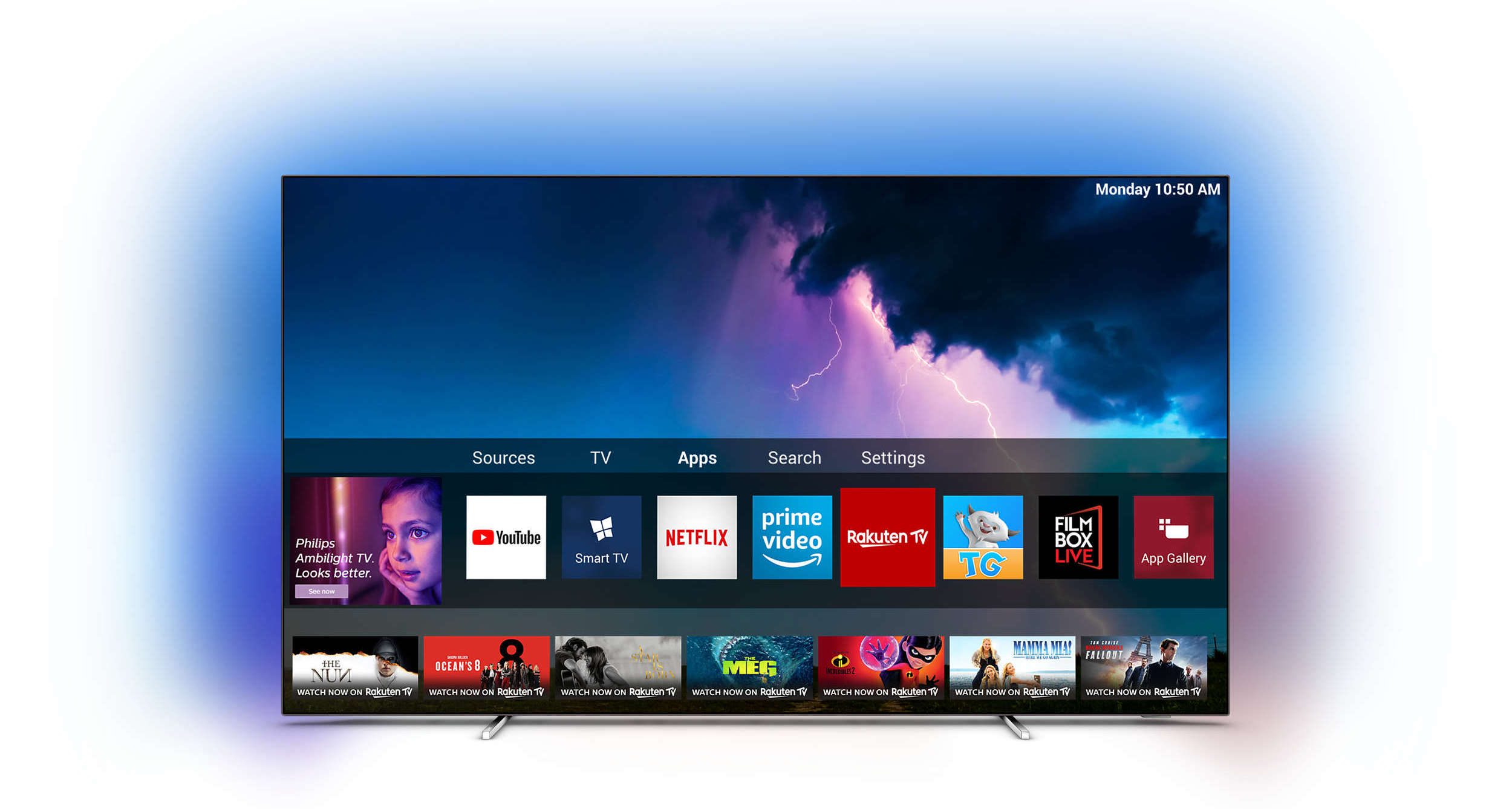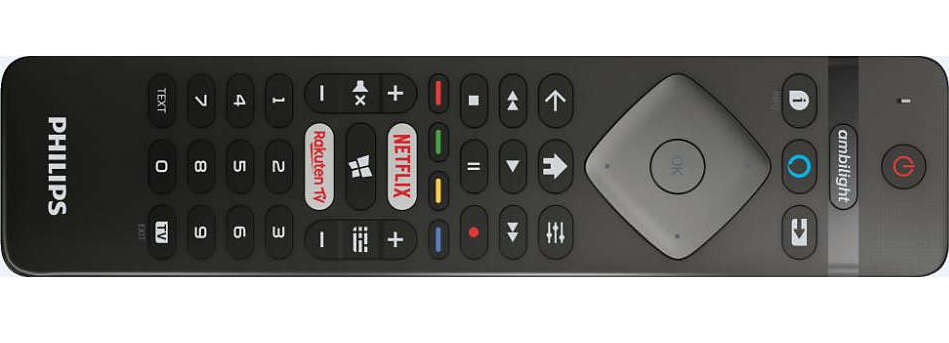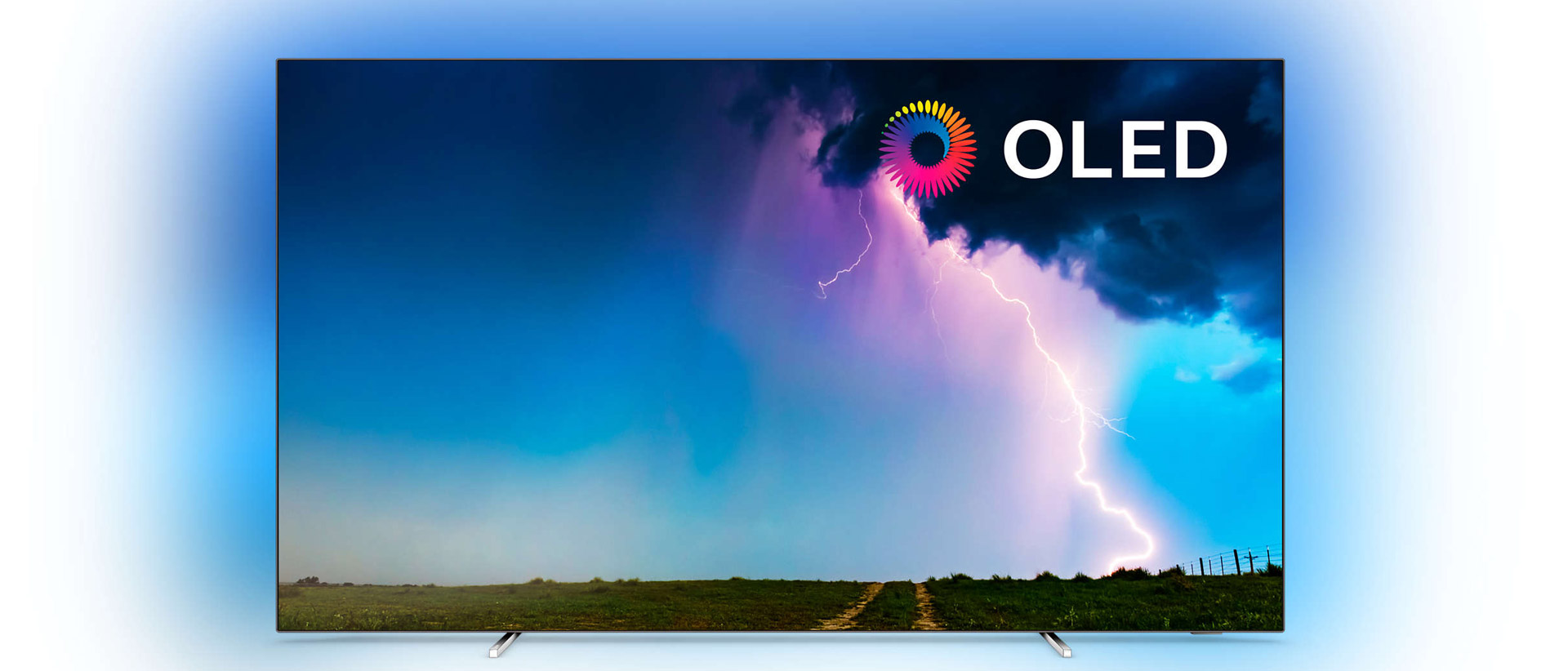TechRadar Verdict
The Philips 55OLED754 offers punchy visuals and a great suite of smart options, at a price that keeps the benefits of OLED TV within lots of people’s reach. The Saphi interface still needs refining, though.
Pros
- +
Great visuals
- +
Ambilight is still cool
- +
Wide ranging HDR compatibility
Cons
- -
Saphi interface can be a chore
- -
Motion settings need fine tuning
Why you can trust TechRadar
What to make of the Philips 55OLED754? OLED is the current Holy Grail of television technology – that much is agreed upon. And, for many years, that’s also put its price out of reach of the average budget. To get the best, you’ve got to pay the most.
But with the technology maturing, so too is its price beginning to fall, to the point where ‘mid-range’ OLED TVs can not only exist, but be incredibly good, too. That’s the bracket that the Philips 55OLED754 finds itself. Nestled just below its flagship OLED+ 9-series and 8-series sets, the 55OLED754 is essentially the brand’s entry-level OLED TV. Don’t let that put you off, though: as Philips shows here, even an entry-level OLED can blow you away.
Price and availability
The Philips 55OLED754 retails at £1,300, and isn’t available in the USA, where the Philips branding is held by Funai, resulting in very different televisions. North America's loss is the rest of the world's gain, though: the sets distributed outside the US are leagues ahead of those with Philips’ badge elsewhere.
At £1,300, the 55OLED754 still isn’t cheap – even if it’s an affordable entry point for an OLED TV. Hisense offers OLED screens at lower prices, such as its O8B OLED, which you can find in sale for under £1,000. But there are real compromises there, whereas the Philips offering is pretty solid across the board.
Following CES 2020, we’re expecting OLEDs to become even cheaper, as manufacturers begin experimenting with displays under the 50-inch mark. But for now, this is close to their entry point, price wise.

Design
Philips OLED 754 line comes in two sizes – 65-inch and 55-inch. As the 55OLED754 name suggests, we’ve been testing the 55-inch model.
It’s a minimalist look at first glance, with a thin black bezel around the edge of the wafer-thin panel, and a pair of near-centre chrome feet making it easy to place on even relatively small TV stands. Wall mounting options are available, too.
Sign up for breaking news, reviews, opinion, top tech deals, and more.
The set is a little on the thicker side at 49.3mm deep, but that comes with a few benefits in this case. Not only does it leave a little room for some more robust speakers, but also delivers one of Philips’ key unique selling points: Ambilight.
The Philips 55OLED754 features three-sided Ambilight, which means it has three strips of LEDs that run along the top, left and right sides of the set, beaming out colors that mimic the onscreen action. Its intensity can be tweaked, as can options to make it follow the set’s audio as opposed to visuals, and it can also act as an ambient light with the screen switched off if you desire. If you have Philips Hue connected light bulbs in your home, the whole room can sync up, bathing you in the colours of the programme you’re watching. No other brands’ TVs offer anything like it, and while it’s an acquired taste – some find it distracting – it’s certainly striking.
Elsewhere, the connections are more prosaic. You’ve got four HDMI ports (including HDMI ARC), and they’re all HDR-ready with HDCP 2.2 support. You won’t get the latest HDMI 2.1 standard, and gamers looking to take advantage of the PS5 and Xbox Series X consoles’ variable refresh rate features will be missing out when they arrive – but it shouldn’t be a huge issue for most.
Elsewhere you’ll find two USB ports – perfect for playing back media from a thumb stick or powering a streaming dongle – Ethernet and dual-band Wi-Fi, digital audio out and a headphone port for good measure.
The remote control is a relatively simple one, with dedicated buttons to Netflix and the Rakuten TV pay-per-view apps, as well as a button to cycle through Ambilight settings. Unlike some other Philips remotes, there’s no keyboard on the back here. But you do get a dedicated Alexa button – yep, that’s right, you can talk to the TV, and use it as a smart home hub as well as jumping around the TV interface and inputs with your voice. Push the button and you wake a microphone inside the remote, which will sync with your Alexa account after a simple set-up process. It’s a welcome addition.
Smart TV (Saphi)
Should we get the bad news out of the way first? Rather than using the Android TV smart platform usually found on high-end Philips screens – and which this reviewer usually prefers – the Philips 55OLED754 is instead using the Linux-based Saphi platform.
While the way it only pops up over the bottom half of the screen (allowing you to continue watching a TV show) is appreciated, its range of compatible apps is limited compared to Google’s offering, and Chromecast isn’t present. Having said that, you won’t be wanting for streaming apps, with all the major providers (Netflix, Amazon Prime Video, BBC iPlayer, etc) catered for, and the ability to play Dolby Vision across them too. Freeview HD, as opposed to FreeView Play, is the terrestrial tuner of choice.
What’s more frustrating is the menu system. While the quad-core processor is snappy enough to fire up options swiftly at the push of a button, you always feel as if you’re a few too many menu trees away from what should be simple settings, making on-the-fly adjustments to the image or other options a chore.

HD/SDR Performance
Though the Philips 55OLED754 is using a slightly-older LG-built panel, and the second generation of the Philips P5 processing engine as opposed to the newer third-gen version, the screen is still a marvel to behold – especially when considering the relatively low cost.
While motion handling can still be a little too aggressive on default settings, out of the box you’re getting a rich and comfortable image in terms of HD performance – not always a given on 4K displays like this.
The P5 engine does a great job of lifting the perceived resolution of HD content, upscaling with care so as to raise the detail level in an image without overtly harshening a picture. Again, some of the more aggressive levels of image smoothing and/or sharpening options can smear or grain an image, but a happy medium can easily be easily found – with some experimentation.
What’s perhaps most impressive is the Perfect Natural Reality setting, Philips intelligent contrast algorithm that transforms standard dynamic range content so as to make it appear like near-native high dynamic range content. It works remarkably well, boosting sun-kissed scenes and detail in darker areas without washing out an image or adding any distorted halo effects that similar processes can introduce.
4K/HDR Performance
As you’d expect, the screen really comes into its own with 4K HDR content. Philips is happy to support all major forms of HDR standards, including Hybrid Log Gamma (HLG), HDR10+ and Dolby Vision, meaning you’re getting an optimal image no matter what the source HDR content is. It’s still relatively rare at this point to see the two latter formats – dynamic metadata formats that adjust HDR performance on a frame-by-frame basis – supported in budget-orientated TVs, but we’re not complaining to see them both here.
OLED, with its self-emissive pixels, allows for almost perfect black levels in dark areas of a scene – but it’s how the Philips 55OLED754 handles greyer areas and near-black scenes that really impresses.
Watching Netflix’s The Irishman, using both the TV’s Dolby Vision Dark and Dolby Vision Bright settings – the former for low lighting conditions, the latter for well lit viewing rooms – the 55OLED754 was fantastic. Expert tone mapping brought life to each corner of a scene, and skin tones were impressively lifelike.
4K football on a Sky Q box put the screen’s motion processing through its paces, and watching with the default picture settings would result in some blurry motion and ghostly video noise – almost like we were seeing double. After a few tweaks on the intensity of the processing, though, things moved swiftly and smoothly, letting us enjoy the dynamism of the floodlit pitch and Perfect Natural Reality system.

Sound
Flatscreen TVs are very often lacking in the audio department, but the Philips 55OLED754 proves an exception to the rule.
Perhaps it’s the extra room afforded by the Ambilight housing, but the 2.1 channel speakers, pushing out 40W of output, prove richer than we’ve come to expect from a flatscreen TV’s built-in speakers. Dialogue is clear, with some notable weight to the bass too. It is, of course, no replacement for a dedicated home cinema set-up or soundbar, but it’s also perfectly adequate, with support for Dolby Atmos passthrough and processing helping matters.
The OLED754 did, however, randomly decide to stop outputting audio over ARC to our Onkyo Atmos AV receiver during testing. A hardware reset fixed this, but was puzzling and annoying all the same.
Final verdict
We’ve had to wait years for it to happen, but we’ve finally got to a point where OLED TVs that don’t sit at the top of the pricing range are as good as they are affordable.
While it’s still a premium TV in the wider sense of the TV market, the Philips 55OLED754 represents a good balancing act between features, performance and picture quality. It has its annoyances, the interface being chief amongst them.
But once you settle down to watch a Dolby Vision title, with your living room’s Hue bulbs synced to the set’s Ambilight powers, it all melts away. At this price point it’s a genuine temptation, and should its price fall in the coming months even further, it’ll be a must-have OLED display.
- Check out the best OLED TVs, regardless of price
- Get the best deal on your next Philips purchase with our Philips promo codes.

Gerald is Editor-in-Chief of Shortlist.com. Previously he was the Executive Editor for TechRadar, taking care of the site's home cinema, gaming, smart home, entertainment and audio output. He loves gaming, but don't expect him to play with you unless your console is hooked up to a 4K HDR screen and a 7.1 surround system. Before TechRadar, Gerald was Editor of Gizmodo UK. He was also the EIC of iMore.com, and is the author of 'Get Technology: Upgrade Your Future', published by Aurum Press.
